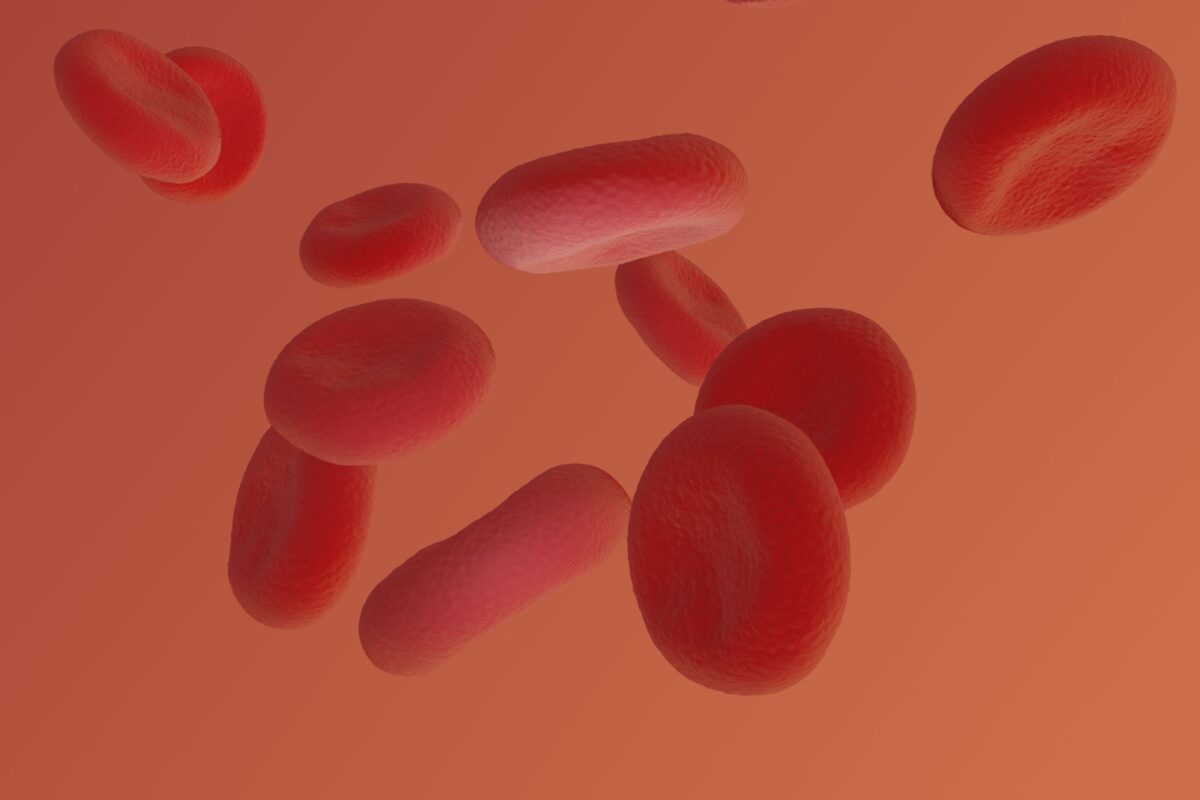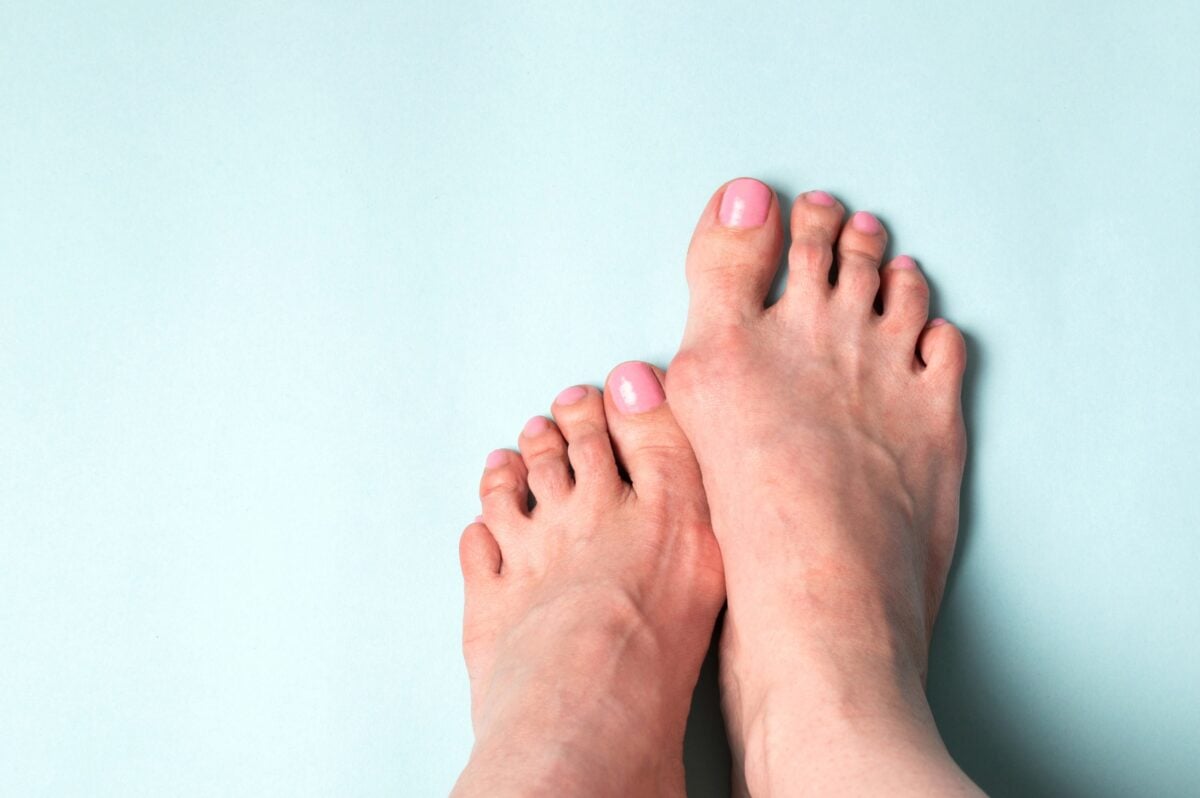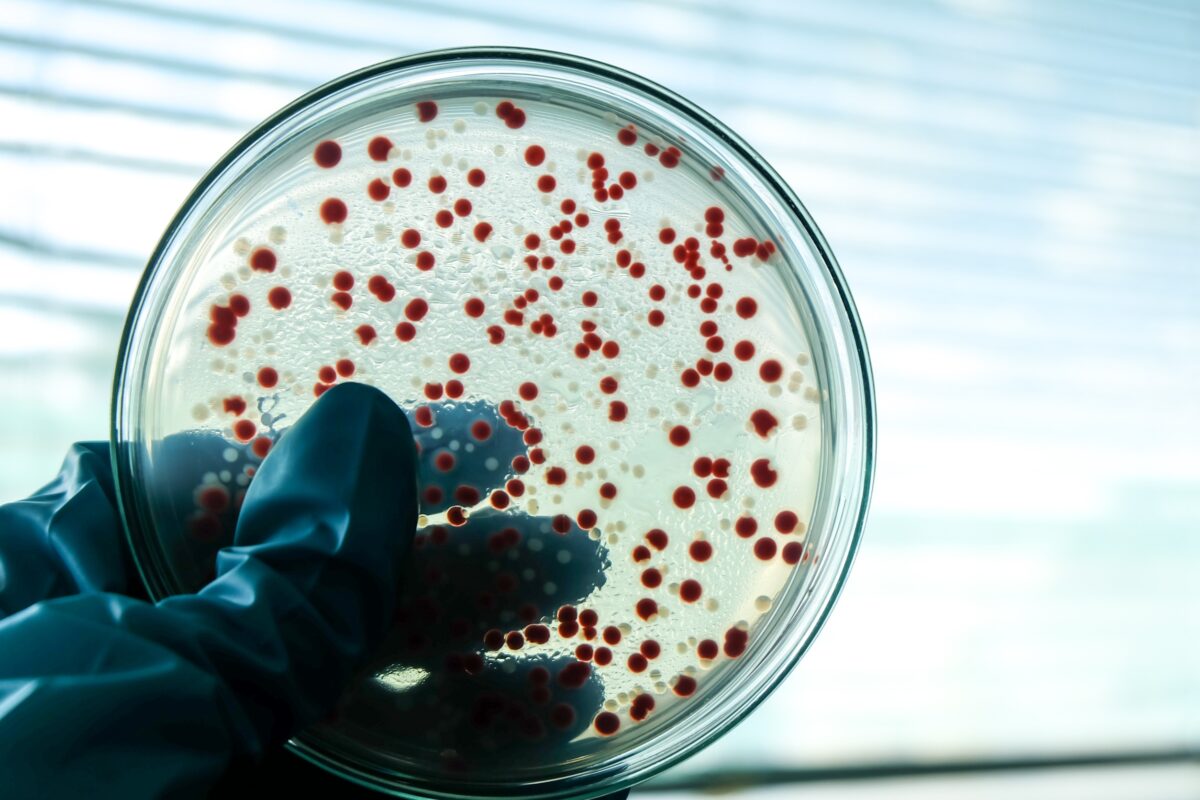What Does Your Blast Count Say About Your Immune System?
Catherine
on
November 13, 2024
Disclaimer: This article is for informational purposes only and is not intended to diagnose any conditions. LifeDNA does not provide diagnostic services for any conditions mentioned in this or any other article.
What are Blast Cells?
Blast cells are immature blood cells found in the bone marrow, where they develop into red blood cells, white blood cells, or platelets. Blast count refers to the number of blast cells. These immature cells play a crucial role in creating new blood cells in a process called hematopoiesis, which happens continuously throughout life. Normally, blast cells stay in the bone marrow until they mature. However, in certain health conditions, they can appear in the bloodstream too early, which is a sign that something is wrong with how the bone marrow is working.
Blast cells usually make up less than 5% of the total bone marrow cells. If they appear in the marrow in larger amounts, or in the bloodstream , it could mean the bone marrow is producing too many immature cells or not maturing them properly. This can lead to problems such as anemia (low red blood cell count), a higher risk of infections, or issues with blood clotting. Conditions like myelodysplastic syndrome (MDS) and leukemia often cause blasts to flood into the bloodstream, where they normally shouldn’t be found.
Blast cells come from hematopoietic stem cells, which are the “parent” cells in the bone marrow. These stem cells develop into one of two types of cells: myeloid or lymphoid.
There are two main types of blast cells based on the cell lineage they are destined to follow:
- Myeloid Blasts: These immature cells develop into granulocytes (such as neutrophils, eosinophils, and basophils), monocytes, and other myeloid cells.
- Lymphoid Blasts: These blasts mature into lymphocytes, a key part of the immune system that includes B cells, T cells, and natural killer cells.
When doctors find a high level of blast cells in the blood, it’s a red flag for serious conditions like acute myelogenous leukemia (AML) or MDS. The type of blast cells—whether they are myeloid or lymphoid—helps doctors diagnose the exact disorder and determine the best course of treatment.
What is a Blast Count?
A blast count refers to the number of immature blood cells, or blast cells, present in the bone marrow or bloodstream. This count is typically expressed as a percentage of the total white blood cells in the bone marrow or blood sample. In healthy individuals, blast cells usually make up less than 5% of the bone marrow cells and are rarely found in the blood.
Why do Blasts Matter?
Blast cells are essential for producing healthy blood cells, but their significance goes beyond their normal role in hematopoiesis. Blasts matter because they can indicate the presence of severe conditions, such as hematopoietic neoplasms, which are disorders that affect blood cell production in the bone marrow. These conditions can disrupt the normal development of blood cells, leading to various health problems.
For example, acute leukemia is one of the most dangerous hematopoietic neoplasms where blasts rapidly multiply and take over the bone marrow, crowding out healthy blood cells. Without prompt treatment, this can quickly become life-threatening. Other disorders, like myelodysplastic syndromes (MDS) and chronic myeloproliferative disorders, also feature elevated blast levels and can gradually impair the bone marrow’s ability to function properly.
Blasts can also circulate in the bloodstream due to other factors such as severe infections, certain medications (like granulocyte colony-stimulating factor), or bone marrow-replacing processes. While not always a sign of cancer, the presence of circulating blasts should always be investigated, as it can point to serious underlying conditions.
How Do You Measure Blast Count?
Blast count is assessed through either a blood test or a bone marrow biopsy, depending on the patient’s condition. Both methods provide insight into how well the bone marrow is functioning.
- Blood Test (CBC with Differential): A complete blood count (CBC) with differential can estimate blast count if blasts are present in the peripheral blood. Normally, blasts are not detectable in a healthy person’s blood. If found, even in small amounts, it may indicate a bone marrow issue. While less invasive, this test may not capture an accurate blast count if levels are low or confined to the marrow.
- Bone Marrow Biopsy: This is the most accurate method for measuring blast count. A small bone marrow sample, usually from the pelvic bone, is examined to determine the percentage of blast cells. A healthy bone marrow contains less than 5% blasts. A higher count or blasts in the bloodstream can indicate serious blood disorders like acute myelogenous leukemia (AML) or myelodysplastic syndromes (MDS).
Why Blast Count Matter
Blast count is a crucial diagnostic tool for identifying and monitoring blood disorders. In healthy individuals, blasts should remain in the bone marrow. If they appear in the bloodstream or exceed 5% in the marrow, it may signal disorders like AML or MDS, which can disrupt normal blood cell development and lead to symptoms such as fatigue, infections, or abnormal bleeding.
Tracking blast count helps doctors evaluate disease progression and treatment effectiveness. A rising count may indicate worsening disease, while a declining count could suggest treatment success. Monitoring these changes enables more informed treatment decisions.
Blasts are measured either as a percentage of white blood cells or by their number per liter of blood. Regular monitoring is vital, especially in conditions like MDS, which can progress into more serious diseases.
What is the Normal Blast Count?
The normal blast count in healthy individuals typically comprises less than 5% of the total cells in the bone marrow. In peripheral blood, blasts should be zero or found in very low numbers.
What Does it Mean if You Have High/Low Blast Count?
High Blast Count
An elevated blast count can signal several health issues:
- Leukemia: High blast counts are commonly associated with leukemia, a cancer that impacts blood and bone marrow. The specific type of leukemia, such as acute myeloid leukemia (AML) or acute lymphoblastic leukemia (ALL), can often be identified based on the characteristics of the blast cells.
- Bone Marrow Disorders: Conditions like myelodysplastic syndromes (MDS) can lead to increased blast counts as the marrow struggles to produce mature blood cells.
- Other Malignancies: Certain cancers can cause secondary increases in blast counts due to their effects on the bone marrow.
To diagnose acute leukemia, criteria include having 20% or more blasts in the peripheral blood or bone marrow, or the presence of specific leukemia gene mutations.
Types of Leukemia and Their Characteristics
- Acute Promyelocytic Leukemia (APL): Recognized for its association with disseminated intravascular coagulation (DIC) and its unique treatment with all-trans retinoic acid (ATRA). Blasts in APL are large, have abundant cytoplasm, and display distinctive bilobed nuclei.
- Acute Monocytic Leukemia: Characterized by leukocytosis and monocytosis, with variable blast counts. Diagnosis requires 20% blasts or promonocytes in the blood or marrow.
- Lymphoblastic Leukemia: Lymphoblasts are small to medium-sized with scant cytoplasm and immature nuclei. Distinguishing lymphoblasts from lymphocytes can be challenging, often requiring flow cytometry.
High blast counts can indicate serious conditions, and monitoring these levels is essential for effective diagnosis and treatment planning.
Low Blast Count
A low or undetectable blast count in the peripheral blood or bone marrow generally indicates a healthy state. However, very low counts may suggest that the bone marrow is under severe stress or not producing enough blood cells.
In the context of leukemia, the presence of blasts in the blood is a crucial indicator. If more than 20% of cells in the blood are blasts, it likely points to leukemia. However, a lower percentage may occur if cancerous cells are trapped in the bone marrow, making them undetectable in blood tests.
Patients with leukemia may present with extremely high white blood cell counts, sometimes reaching between 100,000 to 400,000 per microliter of blood. Conversely, some may have low counts if immature cells are retained in the marrow.
A decreasing number of blasts typically indicates a positive response to treatment, while a rising count can signal a potential relapse.
What Indicates Remission?
Remission can vary based on individual circumstances. Two common categories include complete remission and complete remission with incomplete hematologic recovery. A patient may be considered in complete remission if they:
- No longer require regular transfusions
- Have a hemoglobin count that, while lower than normal, is above 7
- Show no blasts in the blood
- Maintain a platelet count over 100,000 (but below the normal range of 150,000)
- Have a neutrophil count exceeding 1,000
Monitoring these parameters is essential for determining remission status and guiding ongoing treatment.
The Role of Blast Count in MDS and AML: Insights from Genetic Factors
Blast count is a critical factor in the classification and treatment of myelodysplastic syndromes (MDS) and acute myeloid leukemia (AML). Recent studies have revealed the intricate relationship between blast percentages and genetic mutations, highlighting how these elements together impact prognosis and treatment strategies.
In a 2023 Study, researchers established a clear relationship between blast count and overall survival. Higher blast percentages generally correlated with poorer outcomes. However, the presence of certain genetic mutations, such as those affecting genes TP53 or FLT3 (a gene that produces a protein that helps form and grow new blood cells), could offer better prognostic information even in patients with elevated blast counts. This finding suggests that while blast count is essential, incorporating genetic profiling enhances the understanding of patient prognosis.
Another recent study focused on the interactions between blast count and specific mutations in MDS. For instance, patients with lower blast counts who also have the SF3B1 mutation demonstrated significantly better survival rates compared to those with higher blasts. This highlights the importance of genetic factors—such as the presence of SF3B1 mutations—in influencing outcomes, thereby suggesting that assessments should include both blast percentage and genetic mutation status for a more accurate prognosis.
Clearly, the relationship between blast count and genetic factors is important for managing MDS and AML. While blast percentage is a key part of classification, it’s evident that including genetic information—like mutations in genes TP53, FLT3-ITD and SF3B1—can greatly improve prognosis and treatment plans.
Summary
- Blast cells are immature blood cells in the bone marrow that develop into red and white blood cells or platelets.
- Blast cellsplay a vital role in continuous blood cell production through a process called hematopoiesis.
- Normally, blast cells stay in the bone marrow until they mature and make up less than 5% of total cells there.
- If blast cells appear in the bloodstream this indicates potential issues with bone marrow function.
- Increased blast cells are associated with health problems like anemia, infections, and bleeding disorders.
- There are two main types of blast cells: myeloid blasts and lymphoid blasts.
- Myeloid blasts develop into various white myeloid blood cells, while lymphoid blasts mature into lymphocytes..
- A blast count measures the number of immature cells in the blood or bone marrow, expressed as a percentage.
- A normal blast count is less than 5% in the bone marrow and ideally zero in the blood.
- High blast counts often signal serious conditions like leukemia or myelodysplastic syndromes (MDS).
- Tracking blast count changes helps assess disease progression and treatment effectiveness.
- An elevated blast count, particularly over 20%, typically indicates leukemia.
- A low or absent blast count usually suggests healthy bone marrow, but very low counts may indicate systemic stress or inadequate blood cell production.
- Remission is assessed by the absence of blasts in the blood and stable blood cell counts.
- Genetic factors play a significant role in how blast counts affect prognosis and treatment strategies.
- Recent studies indicate that certain genetic mutations can influence survival rates in patients with MDS and acute myeloid leukemia (AML).
- Tailored treatment approaches are necessary as responses to therapies can differ between older and younger patients.
- Understanding both blast counts and genetic information is crucial for effective management of blood disorders.
- Proper monitoring can enhance patient outcomes and inform treatment decisions.
- Recent advancements in genetic testing may allow clinicians to predict patient outcomes more accurately, making personalized therapies important in treating blood cancers like MDS and AML.
- Integrating genetic profiling with blast count analysis helps refine prognosis, ensuring more targeted and effective treatments that improve long-term survival and disease management.
References:
- https://www.verywellhealth.com/overview-of-blast-cells-4114662
- https://www.corpath.net/blasts
- https://www.biron.com/en/glossary/blast-ratio-blast/
- https://www.healthline.com/health/leukemia/leukemia-white-blood-cell-count-range#outlook
- https://www.nature.com/articles/s41375-023-01855-7
- https://www.ncbi.nlm.nih.gov/pmc/articles/PMC5486407/












